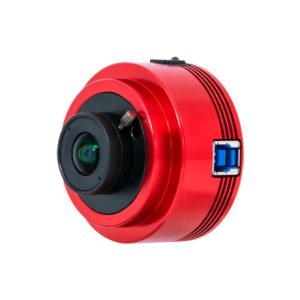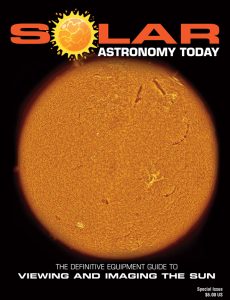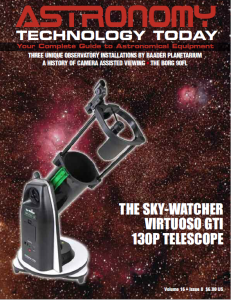The ZWO ASI462MM Camera is the successor to the ZWO ASI290MM planetary camera and offers an excellent option for planetary, lunar and solar imaging. It utilizes the Sony IMX 462 sensor which includes STARVIS technology for better adaptation to low light conditions.
 The camera offers low readout noise, particularly at high gain for stable high dynamic range. The gain is automatically turned on at 80 and the dynamic range reaches close to 12 stops, resulting in a readout noise as low as 0.47e. The low readout noise complements the high quantum efficiency peak of 89% offering an enhanced signal to noise ratio.
The camera offers low readout noise, particularly at high gain for stable high dynamic range. The gain is automatically turned on at 80 and the dynamic range reaches close to 12 stops, resulting in a readout noise as low as 0.47e. The low readout noise complements the high quantum efficiency peak of 89% offering an enhanced signal to noise ratio.
The ZWO ASI462MM includes anti reflective coating on the protective glass. The window diameter is 21mm and thickness is 1.1mm.
The camera is equipped with a USB 3.0 transmission interface and a built-in 256MB DDR3 memory to ensure stable and secure data transmission. Under long exposure, it effectively avoids frame dropping and greatly reduces the glow effect caused by slow reading speed.
The USB 3.0 Port provides 5Gb bandwidth letting the camera run at 136.1fps (10bit, high speed mode) or 63.9fps (12bit, normal mode) at 2mp full resolution. The ST4 Port can be used to connect with an auto guide port of a mount for guiding.
The ZWO ASI462MM Camera offers HCG mode which can effectively reduce readout noise at high gain and allow the camera to maintain the same high dynamic range as it does at low gain. At gain 80, the HCG mode is automatically turned on; the dynamic range reaches a level close to 12stops, and the readout noise can be as low as 0.47e.
The ZWO ASI462MM Camera specifications include:
– ADC: 12 bit
– Frames Per Second (FPS): 136
– Full Well Capacity: 11.2ke
– ADC: 12bit
– Max fps: 136fps
– Pixel Size: 2.9µm
– Quantum Efficiency (QE): 89%
– Readout Noise: 0.47-2.46e
– Back focal distance: 12.5mm
– Resolution: 1936 x 1096
– USB Port: USB 3.0
The ZWO ASI462MM Camera package includes a ST4 guider cable, two-meter USB3.0 cable, 1.25″ nosepiece, 1.25″ cover and a quick start guide. You can learn more about the camera here.

 The Sun is more active than it’s been in years and if that’s not enough, we have the Annular Solar Eclipse on October 14, 2023 and the Total Solar Eclipse on April 8, 2024! If you’d like to learn more about the technology behind solar observing, solar imaging and more, you can check out our free publication, “The Definitive Guide to Viewing and Imaging the Sun”. You don’t have to sign up or provide any information, simply click here and enjoy reading!
The Sun is more active than it’s been in years and if that’s not enough, we have the Annular Solar Eclipse on October 14, 2023 and the Total Solar Eclipse on April 8, 2024! If you’d like to learn more about the technology behind solar observing, solar imaging and more, you can check out our free publication, “The Definitive Guide to Viewing and Imaging the Sun”. You don’t have to sign up or provide any information, simply click here and enjoy reading!
And to make it easier for you to get the most extensive news, articles and reviews that are only available in the magazine pages of Astronomy Technology Today, we are offering a 1-year magazine subscription for only $6! Or, for an even better deal, we are offering 2 years for only $9. Click here to get these deals which only will be available for a very limited time. You can also check out a free sample issue here.

